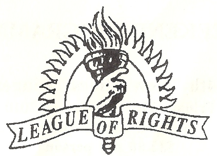Nature’s Fingerprint: The Genetic Architecture of Sex Differences, By Mrs. (Dr) Abigail Knight (Florida)
The debate over sex differences has long oscillated between cultural determinism and biological essentialism. Early second-wave feminism often focussed upon socialisation, attributing behavioural disparities between men and women to patriarchal structures amenable to reform. However, recent evidence from behavioural genetics, endocrinology, evolutionary psychology, and cross-cultural sociology demands a more balanced biosocial view. While culture shapes trait expression, genetic and evolutionary factors often constrain and pattern their distribution.
Biological FoundationsThe most fundamental asymmetry between sexes is reproductive. Females bear the energetic costs of gestation and lactation, shaping physiological and behavioural adaptations over evolutionary time. Males, free from these demands, face stronger sexual selection for intrasexual competition (Trivers, 1972). This manifests in higher average testosterone levels in males across mammals, including humans. Hooven (2021) highlights testosterone's role in greater muscle mass, upper-body strength, and behavioural traits like risk-taking, competitive aggression, and sociosexuality (interest in uncommitted sexual relations). Longitudinal studies show testosterone and aggression peak in young adulthood and decline with age, underscoring a biological basis for these differences.
Cognitive and Psychological DimensionsCognitive psychology reveals small to moderate sex differences in specific domains. Meta-analyses (Halpern et al., 2007) indicate malesoutperform females on spatial rotation tasks, while females lead in verbal fluency and reading comprehension. Hyde's (2014) gender similarities hypothesis notes that these differences are modest. However, small mean differences amplify at the extremes, leading to disproportionate male representation among violent offenders and high-risk entrepreneurs due to risk preference disparities.
Personality research using the Big Five framework (Costa & McCrae, 1992) consistently finds females score higher in agreeableness and neuroticism (anxiety proneness). These traits likely reflect evolutionary pressures tied to women's ancestral roles in pregnancy and childrearing, though cultural norms shape their expression.
Cross-Cultural PatternsIf sex differences stemmed solely from patriarchal constraints, they should diminish in egalitarian societies. Yet, Stoet and Geary (2018) identify a "gender-equality paradox": in gender-egalitarian Nordic countries, women are less likely to pursue STEM degrees than in less egalitarian societies like Algeria or Tunisia. This suggests that when external barriers fade, intrinsic interests, partly shaped by evolved predispositions, drive career choices.
Culture as Amplifier and ModeratorAcknowledging genetic influences does not negate plasticity. Cultural norms can amplify or attenuate biological tendencies. For instance, testosterone levels fluctuate with social context, rising after competitive victories and falling after defeats (Archer, 2006). Similarly, societal expectations shape how traits like aggression or nurturing are expressed, highlighting the interplay between biology and environment (Buss & Schmitt, 2011).
Normative ImplicationsRecognising genetic contributions to sex differences does not imply determinism or hierarchy. Moral equality exists independently of biological similarity. Policies promoting equal opportunity, encouraging girls in STEM and men in care professions, are vital. However, as Anderson (1999) argues, justice entails fair access to capabilities, not identical outcomes. Equity respects individual variation and the overlap in male and female trait distributions. Biology may not be destiny, but it sure is a lot!
ReferencesAnderson, E. (1999). What is the point of equality? Ethics, 109(2), 287–337.
Archer, J. (2006). Testosterone and human aggression: An evaluation of the challenge hypothesis. Neuroscience & Biobehavioral Reviews, 30(3), 319–345.
Buss, D. M., & Schmitt, D. P. (2011). Evolutionary psychology and feminism. Sex Roles, 64(9), 768–787.
Costa, P. T., & McCrae, R. R. (1992). Revised NEO Personality Inventory. Psychological Assessment Resources.
Halpern, D. F., et al. (2007). The science of sex differences in science and mathematics. Psychological Science in the Public Interest, 8(1), 1–51.
Hooven, C. (2021). T: The Story of Testosterone. Henry Holt.
Hyde, J. S. (2014). Gender similarities and differences. American Psychologist, 69(6), 581–592.
Stoet, G., & Geary, D. C. (2018). The gender-equality paradox in STEM education. Psychological Science, 29(4), 581–593.
Trivers, R. L. (1972). Parental investment and sexual selection. In Sexual Selection and the Descent of Man. Aldine, pp. 136-179.
https://dailysceptic.org/2025/09/12/are-sex-differences-genetic/


Comments